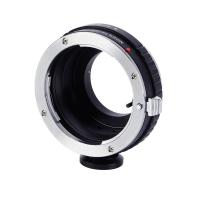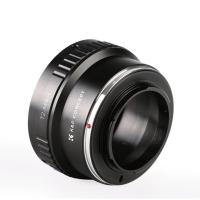What Do Bacteria Look Like Under A Microscope ?
Bacteria are single-celled microorganisms that can vary in shape and size. Under a microscope, they can appear as small, rod-shaped (bacilli), spherical (cocci), or spiral (spirilla) cells. The size of bacteria can range from a few micrometers to less than a micrometer in length. Some bacteria may also have unique shapes, such as filamentous or branching forms. Additionally, bacteria can have different arrangements when observed under a microscope, such as in pairs (diplo), chains (strepto), or clusters (staphylo). The specific appearance of bacteria under a microscope can vary depending on the staining techniques used and the species of bacteria being observed.
1、 Morphology and cellular structure of bacteria
Bacteria are single-celled microorganisms that can be found in various shapes and sizes. When observed under a microscope, their morphology and cellular structure can provide valuable information about their classification and behavior.
The most common bacterial shapes are cocci (spherical), bacilli (rod-shaped), and spirilla (spiral-shaped). However, bacteria can also exhibit more complex shapes such as filamentous or pleomorphic forms. The size of bacteria can range from 0.2 to 10 micrometers, with some exceptions on either end of the spectrum.
The cellular structure of bacteria consists of several key components. The outermost layer is the cell envelope, which includes the cell membrane and cell wall. The cell membrane acts as a barrier, controlling the movement of substances in and out of the cell. The cell wall provides structural support and protection, and its composition varies among different bacterial species. Gram-positive bacteria have a thick peptidoglycan layer in their cell wall, while gram-negative bacteria have a thinner peptidoglycan layer surrounded by an outer membrane.
Inside the cell envelope, bacteria contain cytoplasm, where various metabolic processes occur. The cytoplasm contains genetic material in the form of a single circular chromosome, along with plasmids that carry additional genes. Bacteria also possess ribosomes, which are responsible for protein synthesis.
Some bacteria have additional structures, such as flagella for movement, pili for attachment, and capsules for protection. These structures contribute to the bacteria's ability to survive and interact with their environment.
It is important to note that advancements in microscopy techniques, such as electron microscopy and super-resolution microscopy, have allowed for more detailed observations of bacterial morphology and cellular structures. These techniques have revealed finer details of bacterial ultrastructure and provided insights into the organization and function of various cellular components.
In conclusion, bacteria exhibit diverse shapes and sizes, and their cellular structure consists of a cell envelope, cytoplasm, genetic material, and various additional structures. Ongoing research and technological advancements continue to enhance our understanding of bacterial morphology and cellular structure, shedding light on their remarkable adaptability and survival strategies.

2、 Size and shape variations in bacterial cells
Bacteria are single-celled microorganisms that can be found in various shapes and sizes. When observed under a microscope, their appearance can vary significantly. The size and shape of bacterial cells are influenced by several factors, including the species, growth conditions, and stage of growth.
Bacterial cells can range in size from 0.2 to 10 micrometers in diameter. The most common shape observed is the rod-like structure, known as bacillus. These cells appear elongated and cylindrical, resembling tiny rods. Another common shape is the spherical or round structure, known as cocci. These cells are typically seen as individual spheres or arranged in clusters or chains.
However, bacteria can also exhibit other shapes, such as spiral or curved forms. Spiral-shaped bacteria, known as spirilla, have a helical or corkscrew-like appearance. Curved bacteria, known as vibrios, are slightly curved or comma-shaped. These variations in shape allow bacteria to adapt to different environments and perform specific functions.
It is important to note that recent advancements in microscopy techniques have revealed even more diversity in bacterial cell shapes. For instance, some bacteria have been found to have complex shapes, including star-like, square, or even rectangular structures. These discoveries challenge the traditional understanding of bacterial morphology and highlight the incredible diversity that exists within the microbial world.
In conclusion, bacteria display a wide range of sizes and shapes when observed under a microscope. While rod-like and spherical shapes are the most common, recent research has expanded our understanding of bacterial cell morphology, revealing more complex and diverse structures. Further studies are needed to fully comprehend the significance of these variations and their implications for bacterial function and adaptation.

3、 Internal components and organelles of bacterial cells
Bacteria are single-celled microorganisms that can be found in various shapes and sizes. When observed under a microscope, their appearance can vary depending on the specific species and staining techniques used. However, there are some common features and internal components that can be observed.
The basic structure of a bacterial cell consists of a cell membrane, cytoplasm, and genetic material. The cell membrane acts as a protective barrier and regulates the movement of substances in and out of the cell. Inside the cell, the cytoplasm contains various organelles and structures.
One of the most prominent features of bacterial cells is their genetic material, which is typically a single circular DNA molecule located in the cytoplasm. This region is known as the nucleoid and contains the genetic instructions necessary for the cell's survival and reproduction.
Bacteria also possess ribosomes, which are responsible for protein synthesis. These small structures can be observed as dark granules scattered throughout the cytoplasm. Additionally, some bacteria may have other organelles such as flagella for movement or pili for attachment to surfaces.
Recent advancements in microscopy techniques, such as super-resolution microscopy, have allowed scientists to gain a more detailed understanding of bacterial cell structure. These techniques have revealed the presence of intricate protein complexes involved in various cellular processes, such as cell division and energy production.
It is important to note that bacterial cells are highly diverse, and their appearance can vary significantly. Some bacteria may have a rod-like shape (bacilli), while others may be spherical (cocci) or spiral-shaped (spirilla). Furthermore, the presence of external structures like capsules or cell walls can also influence their appearance under a microscope.
In conclusion, bacteria exhibit a range of shapes and sizes, and their internal components and organelles can be observed under a microscope. Ongoing research and advancements in microscopy techniques continue to provide new insights into the complex structure and organization of bacterial cells.

4、 Flagella and motility in bacteria
Bacteria are single-celled microorganisms that are too small to be seen with the naked eye. To observe their structure and behavior, scientists use microscopes, which allow for magnification and visualization of these tiny organisms. When viewed under a microscope, bacteria appear as small, rod-shaped, spherical, or spiral-shaped cells.
The shape and size of bacteria can vary greatly depending on the species. Some bacteria are cylindrical or rod-shaped, known as bacilli, while others are spherical, called cocci. There are also bacteria that have a spiral or helical shape, known as spirilla or spirochetes, respectively. These different shapes are determined by the bacterial cell wall and cytoskeleton.
In addition to their shape, bacteria may also possess flagella, which are long, whip-like appendages that protrude from the cell surface. Flagella enable bacteria to move and navigate through their environment. The number and arrangement of flagella can vary among bacterial species. Some bacteria have a single flagellum at one end, known as monotrichous, while others have multiple flagella all over the cell surface, called peritrichous.
The motility of bacteria is crucial for various biological processes, including finding nutrients, escaping harmful environments, and interacting with other bacteria. Bacterial motility is achieved through the rotation of flagella, which act like propellers, propelling the bacteria forward or allowing them to change direction.
Recent research has shed light on the intricate mechanisms of bacterial motility. It is now known that the rotation of flagella is powered by a molecular motor located at the base of the flagellum. This motor is driven by the flow of ions across the bacterial cell membrane, generating the necessary energy for flagellar rotation.
In conclusion, bacteria appear as diverse shapes under a microscope, including rods, spheres, and spirals. Some bacteria possess flagella, which enable them to move and navigate their surroundings. The latest understanding of bacterial motility involves the rotation of flagella powered by a molecular motor. Further research in this field continues to uncover new insights into the fascinating world of bacterial behavior and locomotion.







































